The second half of November was a right let down. After weeks of pleasant weather all of a sudden it turned wintery, leaving me with jobs still to do including getting a bag of mixed alliums into the ground.
Last year I scattered about 50 alliums of various varieties in a corner of the orchard. I planted them where they landed and let them and the grass grow to create a wildflower meadow for the bees.
It turned out lovely so now I intend to plant alliums more densely and over a wider area. It’s a job that’s still waiting to be done.
Peony problems
Another job is to lift peonies and find a suitable place for them in the garden. Peonies are one of my pet plants but – bar for an ancient one I brought with me from Wicklow – they don’t do well. For the life of me I don’t know where to put them and they are noted for being temperamental about being moved.

Baby echiums. It will be another two years before they flower.
The obvious place is beside my one performing peony, but it’s east facing and the soil is terrible. I might try one or two there and see how I get on. Thanks to one of our readers, Margot Murphy, for her advice about peonies:
“Peonies have a reputation for sulking after they are moved but that’s mostly because people tend to bury them too deep after moving. Make sure the crown of the plant is level with the soil, they hate being buried below ground.” I will remember that.
Minding echiums
My biggest job is to try and protect our echiums from the wind and frost of the rest of the winter. They were just a few centimetres high at the start of last winter and now they are heading for 2m tall.
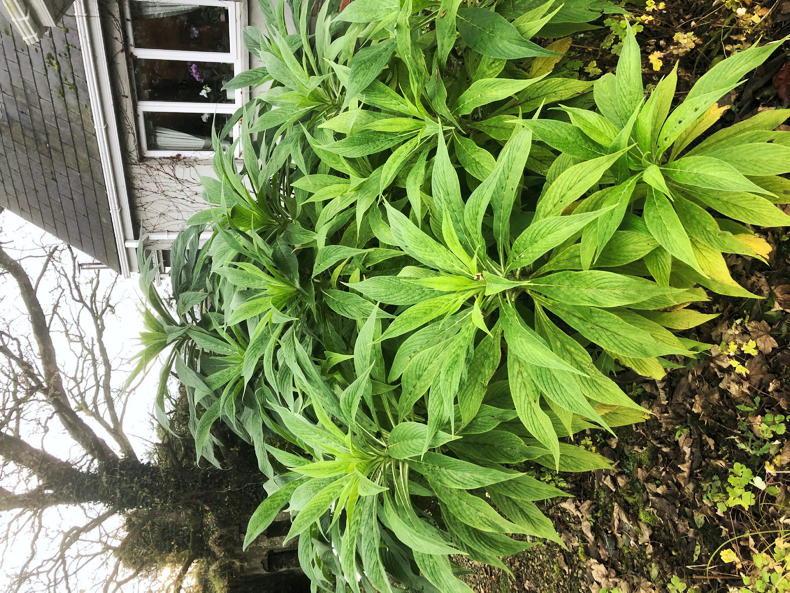
These echiums are 18 months old. Now we have to get them through the winter and hopethey send forth a column of flowers.
If they survive the winter they will produce their first and only flower stem that will tower at least as high again and the bees will love them. I intend to surround them with a wind block and have fleece on standby when frost is forecast. After minding them for 18 months I’m not going to let the frost get them now.
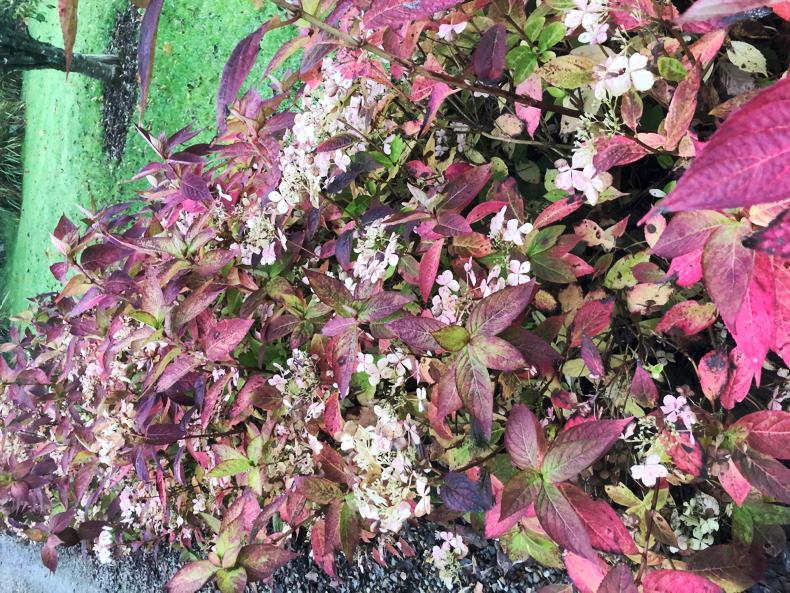
Tinky Winky hydrangea is holding well despite the weather.
Even though it’s late November there’s still plenty of colour in the garden. Hydrangea ‘Tinky Winky’ has been flowering nonstop since June and its leaves have now turned to lovely shades of peach and pink. Even with all the wind it’s hardly lost a leaf. After praising them last month, alstroemerias are still flowering profusely – they are on my shopping list for next year.
Thanks to everyone who answered my call about the missing daffodils. Anne Horgan thought the culprit was Mr Fox while Betty Dineen thought crows were the problem. Karen Ashton said it was work of badgers. She offered advice she received from an elderly gentleman. “Get the men in the house to pee round the perimeter of the garden every couple of days. Marking territory in this way is how badgers and many other mammals keep intruders off their patch.” I wonder what Sean will say to that?
Bulbs for other times of the year
When we talk about bulbs it’s generally about our favourite spring bulbs – daffodils, tulips and snowdrops. But bulbs are not just a stalwart of spring, they can be a useful addition to the garden at any time of the year according to Damian McHugh of www.bulbs.ie
Take alliums as an example. It’s not that long ago since they were virtually unknown here and then they just took off. I remember seeing them in a show gardens at Bloom and immediately wanted them here at home.
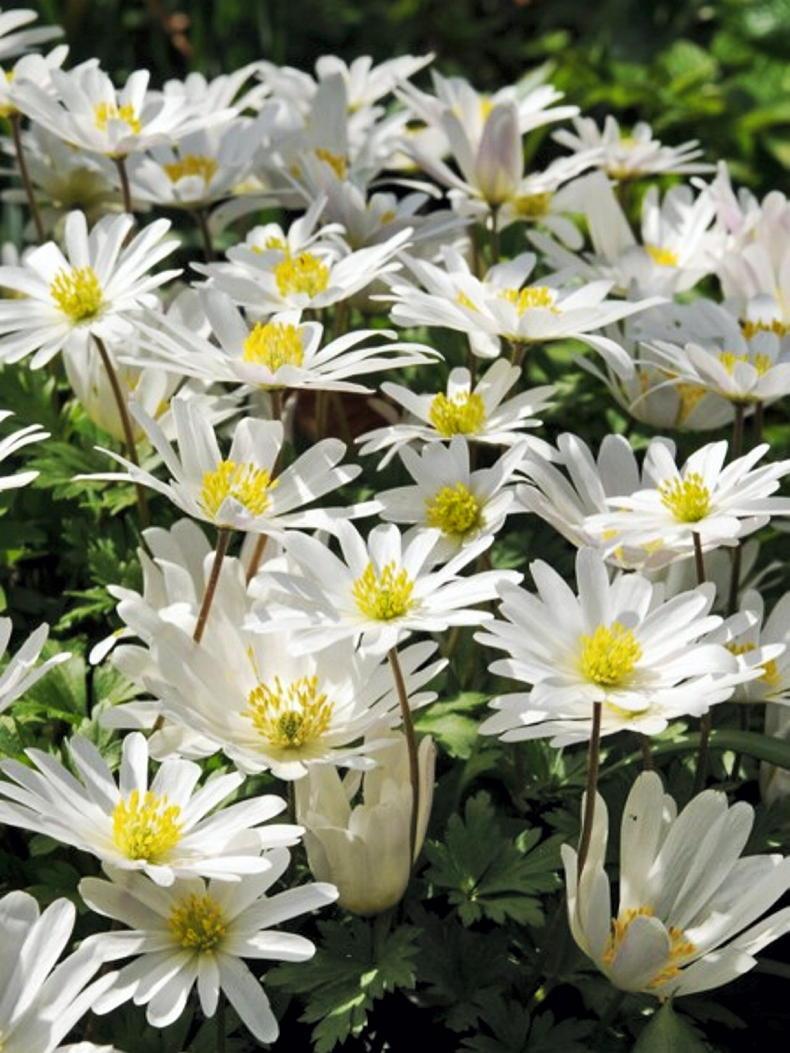
Anemone Blanda 'White Splendour'.
The bulbs were expensive enough and I started with just a few in pots. They didn’t do too well so I tried them in the flower beds where they worked a treat. Standing tall like exotic lollipops they are great to fill the gap between the end of the spring bulbs and the start of the herbaceous perennials. They are particularly good as a foil to pink roses.
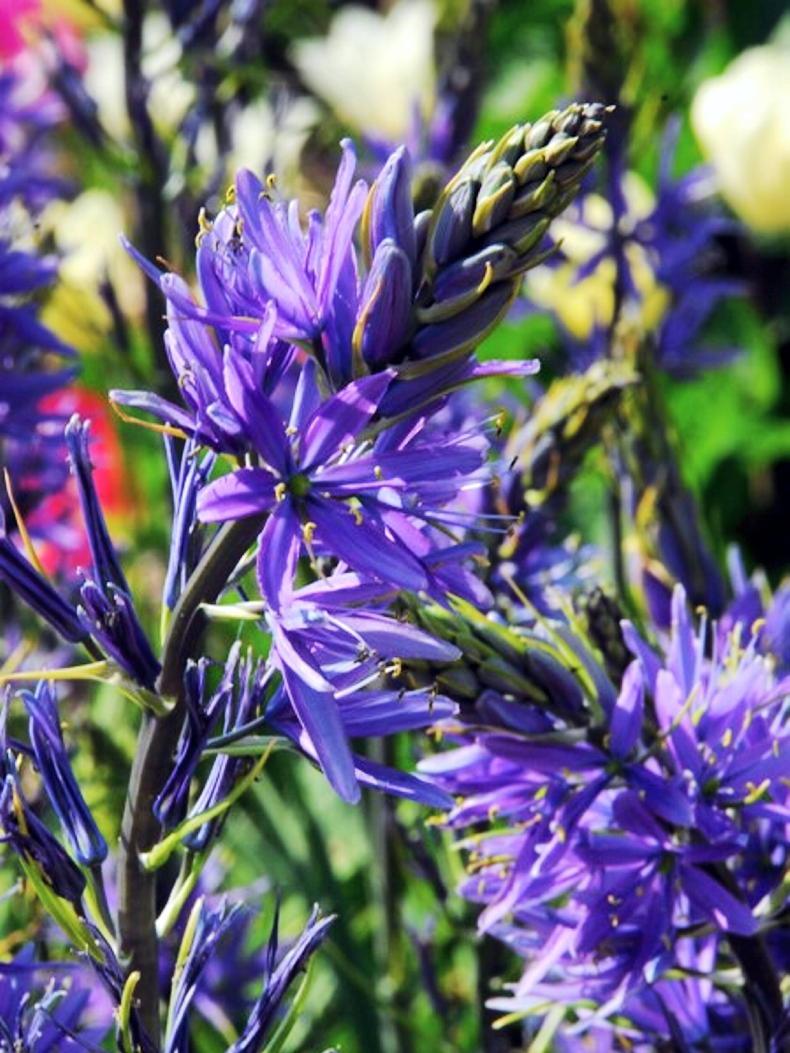
Camassia quamash.
If you have never planted alliums Damian recommends the hugely popular ‘Purple Sensation’ and the bees just love it. It retains its colour for weeks and the seed head will keep the show going. Damian says it’s a good idea to lift and separate the bulbs every two to three years. It’s best to do this in July/August when the stalks have turned woody.
Damian also recommends the ‘Drumstick’ allium which flowers later in the year. It produces long stalks that look fragile but are in fact really strong. After weeks of doing nothing they eventually produce purple and green flowers that change to purple and cream as they mature. With their pink to light purple colours colchicums can be easily mistaken for crocuses. While they look fragile they are anything but. They can be planted up to the end of November and will explode out of the ground a few weeks later.
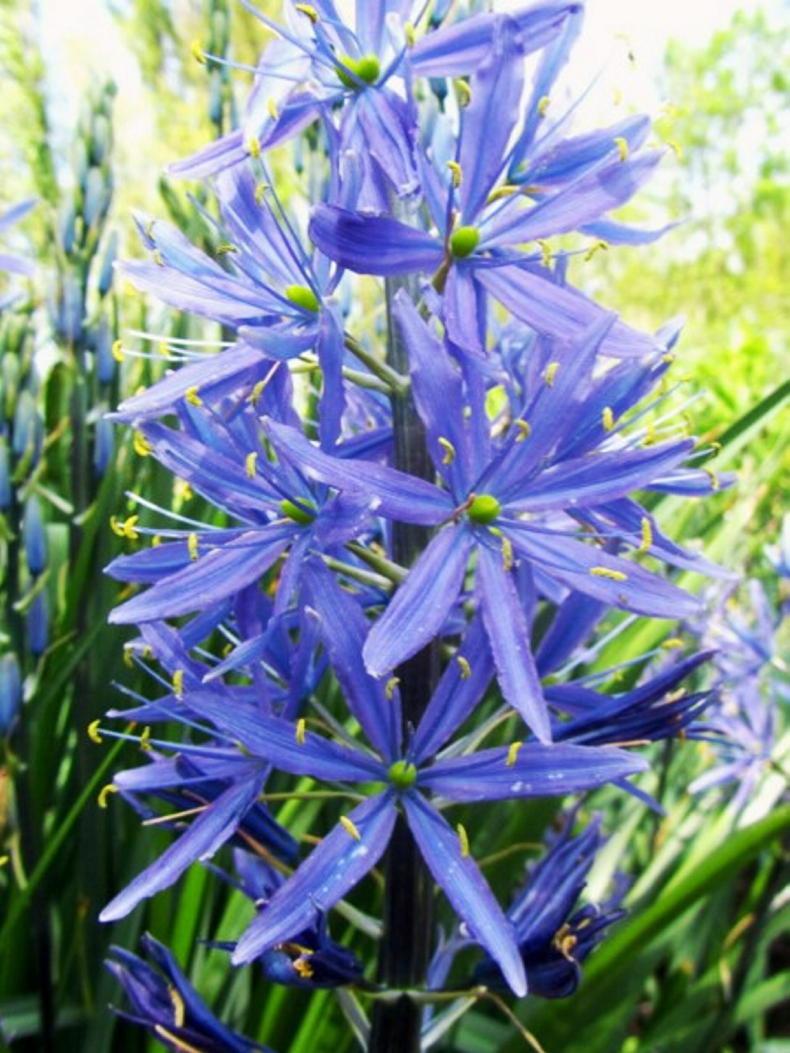
Camassia caeruela.
Anemone ‘Blanda’ flowers in April and its fresh blue petals and yellow centers are a lovely contrast to all the yellow daffodils. Plant immediately in pots near the house or on the edges of grass you don’t mow. Damian says to watch out for ‘St Bridget’, an anemone bred in Geashill in 1890.
Camassia bulbs produce tall spires with star like flowers on the top half of the stem. Colours range from white to pale blue to dark blue. Sow from October to Christmas to flower in June and July. Damian recommends Quamash which is a shorter variety and dark blue in colour and Leichtlinii caerulea also dark blue but twice the height of the former.
For more about bulbs contact Damian McHugh at www.bulbs.ie
The second half of November was a right let down. After weeks of pleasant weather all of a sudden it turned wintery, leaving me with jobs still to do including getting a bag of mixed alliums into the ground.
Last year I scattered about 50 alliums of various varieties in a corner of the orchard. I planted them where they landed and let them and the grass grow to create a wildflower meadow for the bees.
It turned out lovely so now I intend to plant alliums more densely and over a wider area. It’s a job that’s still waiting to be done.
Peony problems
Another job is to lift peonies and find a suitable place for them in the garden. Peonies are one of my pet plants but – bar for an ancient one I brought with me from Wicklow – they don’t do well. For the life of me I don’t know where to put them and they are noted for being temperamental about being moved.

Baby echiums. It will be another two years before they flower.
The obvious place is beside my one performing peony, but it’s east facing and the soil is terrible. I might try one or two there and see how I get on. Thanks to one of our readers, Margot Murphy, for her advice about peonies:
“Peonies have a reputation for sulking after they are moved but that’s mostly because people tend to bury them too deep after moving. Make sure the crown of the plant is level with the soil, they hate being buried below ground.” I will remember that.
Minding echiums
My biggest job is to try and protect our echiums from the wind and frost of the rest of the winter. They were just a few centimetres high at the start of last winter and now they are heading for 2m tall.

These echiums are 18 months old. Now we have to get them through the winter and hopethey send forth a column of flowers.
If they survive the winter they will produce their first and only flower stem that will tower at least as high again and the bees will love them. I intend to surround them with a wind block and have fleece on standby when frost is forecast. After minding them for 18 months I’m not going to let the frost get them now.

Tinky Winky hydrangea is holding well despite the weather.
Even though it’s late November there’s still plenty of colour in the garden. Hydrangea ‘Tinky Winky’ has been flowering nonstop since June and its leaves have now turned to lovely shades of peach and pink. Even with all the wind it’s hardly lost a leaf. After praising them last month, alstroemerias are still flowering profusely – they are on my shopping list for next year.
Thanks to everyone who answered my call about the missing daffodils. Anne Horgan thought the culprit was Mr Fox while Betty Dineen thought crows were the problem. Karen Ashton said it was work of badgers. She offered advice she received from an elderly gentleman. “Get the men in the house to pee round the perimeter of the garden every couple of days. Marking territory in this way is how badgers and many other mammals keep intruders off their patch.” I wonder what Sean will say to that?
Bulbs for other times of the year
When we talk about bulbs it’s generally about our favourite spring bulbs – daffodils, tulips and snowdrops. But bulbs are not just a stalwart of spring, they can be a useful addition to the garden at any time of the year according to Damian McHugh of www.bulbs.ie
Take alliums as an example. It’s not that long ago since they were virtually unknown here and then they just took off. I remember seeing them in a show gardens at Bloom and immediately wanted them here at home.

Anemone Blanda 'White Splendour'.
The bulbs were expensive enough and I started with just a few in pots. They didn’t do too well so I tried them in the flower beds where they worked a treat. Standing tall like exotic lollipops they are great to fill the gap between the end of the spring bulbs and the start of the herbaceous perennials. They are particularly good as a foil to pink roses.

Camassia quamash.
If you have never planted alliums Damian recommends the hugely popular ‘Purple Sensation’ and the bees just love it. It retains its colour for weeks and the seed head will keep the show going. Damian says it’s a good idea to lift and separate the bulbs every two to three years. It’s best to do this in July/August when the stalks have turned woody.
Damian also recommends the ‘Drumstick’ allium which flowers later in the year. It produces long stalks that look fragile but are in fact really strong. After weeks of doing nothing they eventually produce purple and green flowers that change to purple and cream as they mature. With their pink to light purple colours colchicums can be easily mistaken for crocuses. While they look fragile they are anything but. They can be planted up to the end of November and will explode out of the ground a few weeks later.

Camassia caeruela.
Anemone ‘Blanda’ flowers in April and its fresh blue petals and yellow centers are a lovely contrast to all the yellow daffodils. Plant immediately in pots near the house or on the edges of grass you don’t mow. Damian says to watch out for ‘St Bridget’, an anemone bred in Geashill in 1890.
Camassia bulbs produce tall spires with star like flowers on the top half of the stem. Colours range from white to pale blue to dark blue. Sow from October to Christmas to flower in June and July. Damian recommends Quamash which is a shorter variety and dark blue in colour and Leichtlinii caerulea also dark blue but twice the height of the former.
For more about bulbs contact Damian McHugh at www.bulbs.ie







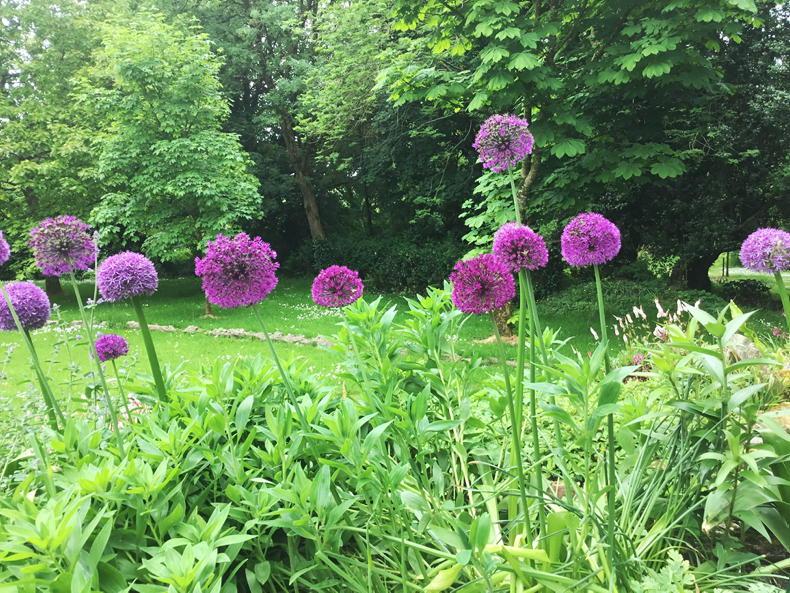




 This is a subscriber-only article
This is a subscriber-only article





SHARING OPTIONS: